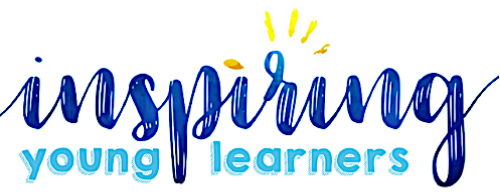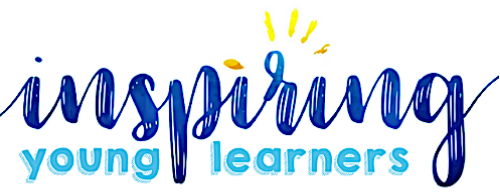How do I implement standards effectively, while meeting the diverse needs of my English language learners?
EFFECTIVE SCAFFOLDING STRATEGIES!
In Episode 96 of the Equipping ELLs podcast, we’re delving into the world of effective scaffolding strategies that can truly transform your classroom. We’ll explore three essential scaffolds designed to cater to the diverse needs of ELLS across various language proficiency levels. Plus, we’ve got a valuable freebie to help you implement these strategies seamlessly.logitech c270 microphone not working años 20 hombre disfraz meilleur lampe uv meilleur lampe uv sbloccare oblo lavatrice ariston callaway reva femme balenciaga 2017 shoes logitech c270 microphone not working air nike sneakers játék hajszárító árukeresö bose quietcomfort 35 usa price tp link remote control Bonnets rugby corner costume leopardato triangolo Italy logitech c270 microphone not working
Implementing academic standards effectively and employing research-based strategies while accommodating the unique requirements of ELLs is a vital challenge for educators. Scaffolding, a method of providing targeted support, plays a pivotal role in meeting these challenges. It enables teachers to assist students in tackling tasks that may otherwise seem daunting. As classrooms become increasingly diverse, scaffolding becomes indispensable to ensure that all students receive the necessary assistance for success.
Scaffold 1: Visual Supports | Our first scaffold revolves around the power of visuals, a fundamental tool in every educator’s arsenal. Visual supports not only make content comprehensible but also provide crucial aid to language learners at different proficiency levels. Let’s break down how to effectively utilize visuals for various language proficiency levels:
- Level One (Newcomers): Begin by introducing tangible objects such as plants, soil, and seeds for hands-on experiences. Allow students to interact with these items while introducing essential vocabulary.
- Level Two (Beginners): Implement picture cards displaying plant requirements, including air, light, water, and nutrients. Foster a connection between visuals and vocabulary.
- Level Three (Developing): Use sequencing images to depict plant growth stages, encouraging students to discuss the factors influencing growth. Promote both oral and written explanations.
- Level Four (Expanding): Provide infographics with detailed plant growth information, comparisons, and categorization. Encourage students to engage with the data.
- Level Five (Bridging): Utilize educational videos with subtitles, periodically pausing to facilitate discussions, ask questions, and ensure comprehension.
Consistency is key: Maintain the use of symbols or hand motions for vocabulary across all language proficiency levels. Preparing vocabulary cards in advance and adapting their use for different proficiency levels can streamline the process.
Scaffold 2: Sentence Stems | Sentence stems offer a structured approach for students to articulate their thoughts and ideas, assisting them in overcoming language barriers. These stems can be applied effectively across all language proficiency levels:
- Level One: Begin with simple stems like “The story is about…” and “The lesson is…” for recounting and identifying lessons.
- Level Two: Introduce attributes using stems such as “First, then next…” and “The main characters in the story are…”
- Level Three: Incorporate more complex language with stems like “The story unfolds by…” and “The lesson is conveyed through…”
- Level Four: Challenge students with stems like “The plot of the story develops as…” and “The climax of the story occurs when…”
- Level Five: Introduce formal mathematical language with stems like “Two-dimensional” and “Congruent,” along with comparative sentences.
Remember to provide examples that illustrate how to use these stems in context, enhancing comprehension and application.
Scaffold 3: Word Banks | Word banks are powerful tools for helping students grasp and discuss complex concepts, whether in math, science, or any subject. Here’s how to effectively utilize word banks for different language proficiency levels:
- Level One: Start with basic shape vocabulary and accompanying images. Ensure students understand shape names and can match them to images.
- Level Two: Introduce attributes (e.g., side, angle, right angle, corner) with visuals. Add definitions to aid comprehension.
- Level Three: Expand the word bank to include complex terms like “subcategory” and “dimension.” Provide concise, straightforward definitions.
- Level Four: Incorporate more advanced terms and introduce sentences for comparing and contrasting shapes.
- Level Five: Include formal mathematical language and offer sentences that demonstrate word usage in context.
Enhance understanding with visuals, and consider exploring cognates between students’ native language and English, especially for scientific or mathematical terms.
Scaffolding is an invaluable tool for educators working with ELLs. By tailoring these strategies to your students’ language proficiency levels, you can empower them to unlock content and thrive in your classroom!
Resources:
- Join the Equipping ELLs Membership (We have everything you need for your school year!)
- Shop our TpT Store for Hundreds of ELL Resources
- FREEBIE: Using Scaffolds to Support Your ELLs
- Tell us how Equipping ELLs has helped you to be featured on our 100th episode!
Connect with Beth:
More about Equipping ELLs:
We all know that teaching isn’t easy, but it doesn’t have to be this hard. Equipping ELLs is a podcast for both ESL specialists and homeroom teachers who are looking for effective and engaging ways to support their English Language Learners without adding to their endless to-do list. Tune in each week to hear tips, strategies, and inspirational stories that will empower you to better reach your ELL students, equip them with life-long skills, and strengthen relationships with colleagues and parents.
Your host, Beth Vaucher, is the founder of Inspiring Young Learners. She is an ESL certified homeroom teacher with over 10 years of experience teaching in the US and internationally. Her background of M.Ed in ESL and Curriculum and Instruction combined with her experience has led her to develop a bestselling newcomer curriculum that has sold in over 90 countries around the globe. She brings a different perspective to teaching ELLs from her years teaching and living abroad and working with ELLs from around the world. You will walk away from each episode with the ideas and tools you need to transform your experience as a teacher and cultivate a thriving and welcoming environment for your ELL students.



